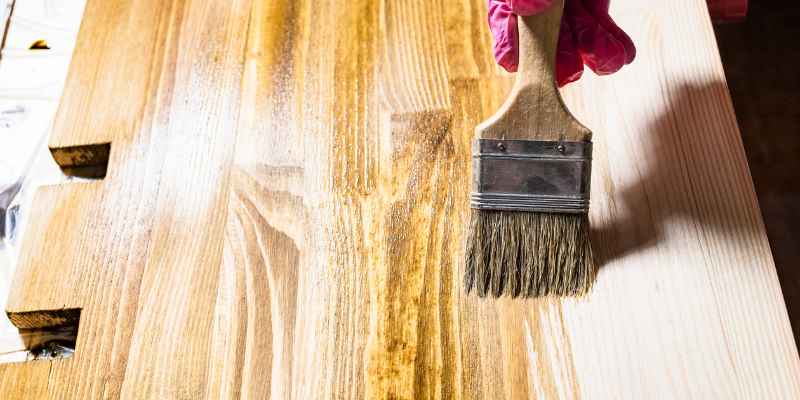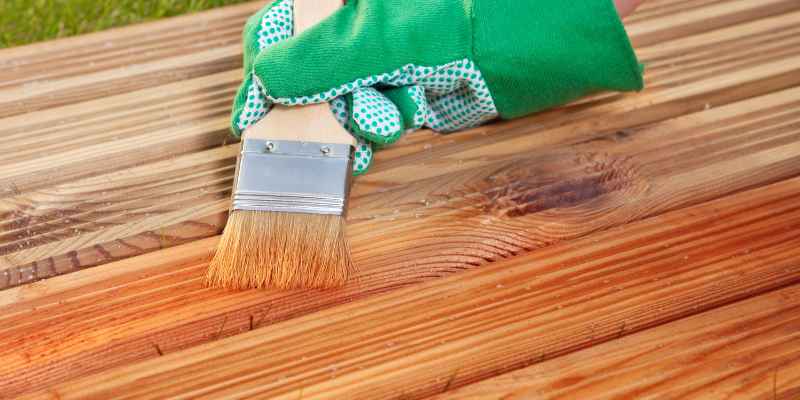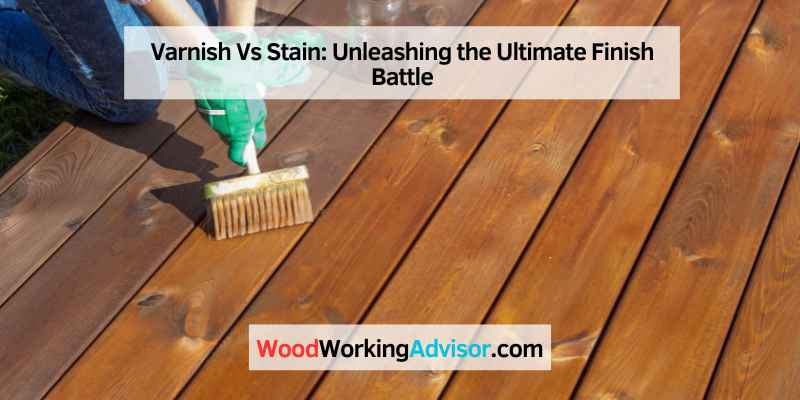Varnish provides a protective coating, while stain enhances the natural beauty of the wood. Varnish adds a layer of protection to the wood surface, while stain penetrates the wood to enhance its color and grain.
Choosing between varnish and stain depends on the desired outcome and the level of protection needed for the wood surface. Both options have their advantages and can be used separately or in combination for different wood projects. Understanding the differences between varnish and stain will help you make an informed decision for your specific wood finishing needs.
We will explore the characteristics of varnish and stain, their application methods, and the benefits of each. Whether you are a professional woodworker or a DIY enthusiast, this guide will assist you in choosing the right solution for your project.
What Is Varnish?
Welcome to our blog post on the topic of Varnish Vs Stain, where we’ll be exploring the differences between these two popular finishes for wood. In this section, we’ll start by understanding what varnish is and how it is used to enhance the beauty of wooden surfaces. So, let’s dive in!
Definition
Varnish is a transparent or translucent protective coating that is applied to wooden surfaces to enhance their appearance and provide durable protection against various environmental factors. When applied, varnish forms a hard, glossy film that not only adds a layer of shine but also safeguards the wood from moisture, UV rays, scratches, and general wear and tear.
Types
There are different types of varnishes available in the market, each offering unique features and benefits. Here are some popular types of varnishes:
- Oil-based Varnish: Made with a combination of natural oils and resins, oil-based varnishes are known for their deep penetration into the wood and long-lasting protection. They provide an amber hue to the wood, enhancing its natural beauty. Additionally, oil-based varnishes are relatively easy to apply.
- Water-based Varnish: Water-based varnishes are a more eco-friendly alternative to oil-based varnishes. They are made with water as the primary solvent, mixed with resins and additives. This type of varnish is known for its lower VOC (Volatile Organic Compounds) emissions, quick drying time, and ease of application. Water-based varnishes provide a clear, non-yellowing finish to the wood.
- Spar Varnish: Spar varnish is specifically designed for outdoor use, providing exceptional protection against sunlight, moisture, and temperature changes. It is ideal for coating wooden surfaces exposed to harsh weather conditions, such as exterior doors, decks, and furniture.
- Matte Varnish: Matte varnish offers a low-shine finish, giving a more natural look to the wood. It is suitable for surfaces where a glossy appearance is not desired, such as rustic furniture or antique pieces.
Each type of varnish has its own advantages, depending on the specific requirements of the project. It is essential to choose the right varnish to achieve your desired look and level of protection for your wooden surfaces.

What Is Stain?
When it comes to enhancing and protecting the natural beauty of wood, two popular options that often come to mind are varnish and stain. In this article, we’ll explore the world of stains and understand what they are, the different types available, and how they can transform the appearance of wood.
Definition
Stain, in the context of woodworking and finishing, refers to a type of product specifically designed to add color to wood surfaces while still allowing the natural grain and texture to be visible. Unlike paint that masks the wood completely, stain penetrates into the surface, highlighting its natural beauty.
Types
There are several types of stain available in the market, each offering unique benefits and characteristics. Here are some common types you may come across:
- Oil-based Stain: This type of stain is made by suspending pigments in oil, which provides excellent penetration into the wood. It offers a rich and deep color that enhances the natural beauty of the wood grain.
- Water-based Stain: As the name suggests, this type of stain is made by suspending pigments in water. It is an eco-friendly option that has low odor and dries quickly. Water-based stains are available in a wide range of colors and are easy to clean up.
- Gel Stain: Gel stains are thick and provide a more controlled application compared to other types of stains. They are ideal for vertical surfaces and can be used to create faux wood finishes. Gel stains work well on non-porous materials too, making them versatile.
- Penetrating Stain: Penetrating stains are designed to soak into the wood fibers, providing a more natural look. They often contain a blend of pigments and dyes, offering a wider variety of color options.
- Varied Translucent Stain: This type of stain offers a unique finish that allows the natural grain and color variations of the wood to show through while still adding a touch of color. It is particularly suitable for highlighting the beauty of highly figured wood.
Each type of stain has its own unique properties, so it is important to consider your project requirements and desired outcome when choosing the right stain for your wood surfaces.
Differences Between Varnish And Stain
When it comes to protecting and enhancing wooden surfaces, varnish and stain are two popular options. Understanding the differences between varnish and stain is essential in order to choose the right option for your project. This article will explore the key distinctions between varnish and stain in terms of their application, appearance, and durability.
Strongapplication/strong
One of the primary differences between varnish and stain lies in their application process.
When applying varnish, it is important to start by sanding the surface to ensure a smooth and even finish. Next, using a brush, apply thin and even coats of varnish in the direction of the wood grain. Allow each coat to dry completely before applying the next layer. It is recommended to apply multiple coats of varnish to achieve a protective and glossy finish.
In contrast, staining does not require the same level of preparation or layering. Stain is often applied directly to the wood surface using a brush, roller, or cloth. The stain should be evenly spread across the wood, allowing it to penetrate and enhance the natural color and grain. Once applied, excess stain can be wiped away using a cloth. Stains are available in a variety of colors and tones, providing flexibility in achieving the desired look.
Strongappearance/strong
The visual effect of varnish and stain also differs significantly.
Varnish creates a clear, glossy finish that enhances the natural beauty of the wood. This glossy finish can add depth and richness to the wood’s color and grain, making it an ideal choice when seeking a polished and refined appearance. Additionally, varnish provides protection against moisture, UV rays, and general wear and tear, making it suitable for indoor and outdoor applications.
Stains, on the other hand, offer a more transparent look that allows the natural characteristics of the wood to shine through. Depending on the opacity level, stains can range from subtly enhancing the wood’s color to dramatically altering its appearance. Unlike varnish, stains do not provide the same level of protection against elements such as moisture or UV rays.
Strongdurability/strong
When it comes to durability, varnish and stain offer varying levels of protection.
Varnish provides a strong protective barrier against moisture, sunlight, scratches, and general wear and tear. This makes varnish an excellent choice for high-traffic areas or outdoor surfaces that are exposed to the elements. With proper maintenance, varnish can maintain its integrity and appearance for several years.
On the other hand, stains are not as durable as varnish. While stains enhance the natural beauty of the wood, they do not provide the same level of protection. Stains may be more prone to damage from moisture or UV rays, requiring more frequent reapplication to maintain their appearance over time.
In conclusion, varnish and stain each have their own unique qualities that make them suitable for different projects. Varnish is known for its glossy finish and superior protection, making it a great choice for a long-lasting and polished look. Stains, on the other hand, offer the flexibility to enhance the natural beauty of the wood while providing a more transparent appearance. Understanding these differences will allow you to make an informed decision based on your specific needs and desired outcome.
Choosing Between Varnish And Stain
When it comes to finishing your wooden furniture or surfaces, two popular options that often come up are varnish and stain. While both serve the purpose of enhancing the appearance and protecting the wood, they differ in their application, durability, and overall effect. In this article, we will explore the considerations, pros and cons of varnish and stain to help you make an informed decision.
Considerations
Before deciding between varnish and stain, there are a few key factors to consider:
- The type of wood: Different types of wood react differently to varnish and stain. Some woods may absorb stain more evenly, while others may require more coats of varnish for proper protection.
- Desired finish: Are you aiming for a natural and transparent look, or do you prefer a glossy and shiny appearance? Understanding the finish you want to achieve will guide your choice between varnish and stain.
- Indoor or outdoor use: Will the wooden surface be exposed to moisture, sunlight, or other elements? This will determine the level of protection and durability required and influence your selection of varnish or stain.
Pros And Cons
Now let’s dive into the pros and cons of both varnish and stain:
Varnish
| Pros | Cons |
|---|---|
|
|
Stain
| Pros | Cons |
|---|---|
|
|
In conclusion, choosing between varnish and stain ultimately depends on your specific needs and preferences. If you prioritize durability and a high level of protection, varnish is the way to go. On the other hand, if you prefer a more natural and organic look and are willing to compromise on some level of protection, stain may be the better choice. Consider the type of wood, desired finish, and intended use of the wooden surface to make an informed decision that suits your requirements.

Frequently Asked Questions On Varnish Vs Stain
What’s Better Stain Or Varnish?
Stain and varnish serve different purposes. Stain enhances the natural color and grain of wood, while varnish provides a protective finish against wear and tear. The choice depends on your preference and the desired outcome for your project.
Do I Need To Varnish After Staining?
Yes, after staining, it is necessary to varnish. Varnishing protects the stained surface, enhances the appearance, and adds durability to the wood. It seals in the stain, providing a protective barrier against moisture, UV rays, and normal wear and tear.
What Are The Disadvantages Of Varnish?
Varnish has a few disadvantages. It can discolor with time, requires regular maintenance, and can be sensitive to moisture and heat. Additionally, it may not adhere well to certain surfaces and can emit strong fumes during application.
Does Varnish Make Wood Look Better?
Varnish enhances the appearance of wood, making it look better by adding a glossy or satin finish. It brings out the natural beauty of the wood grain and provides protection against wear and tear.
Conclusion
Based on the information presented, the choice between varnish and stain ultimately depends on your specific needs and preferences. Varnish offers superior protection and durability, making it ideal for high-traffic areas. On the other hand, stain enhances the natural beauty of the wood while providing some level of protection.
Consider factors such as desired finish, maintenance, and budget when making your decision. In the end, both options have their advantages, so choose what suits your project best.

